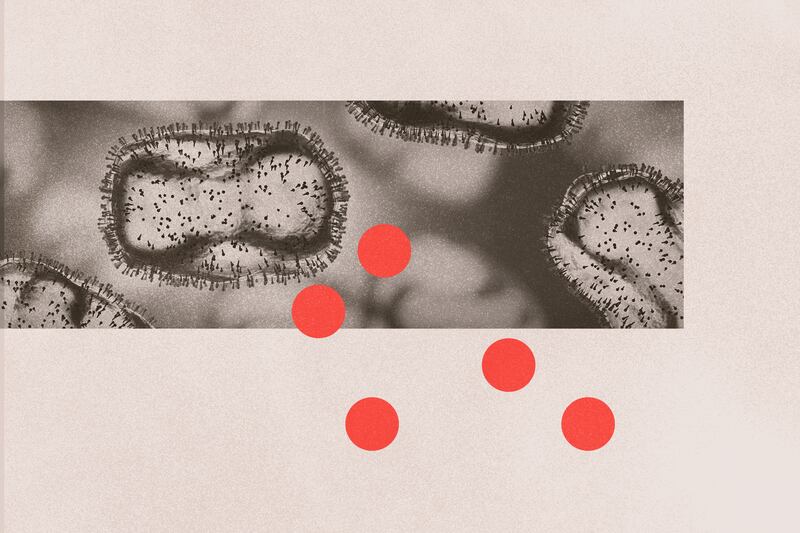Federal health officials are reportedly pondering whether to declare the monkeypox outbreak a public health emergency nationwide. But some local health departments aren’t waiting for the feds to decide.
The New York State Department of Health on July 28 declared that monkeypox is an “Imminent Threat to Public Health.” That same day, San Francisco deemed the virus a local health emergency.
“This declaration means that local health departments engaged in response and prevention activities will be able to access additional state reimbursement, after other federal and state funding resources are maximized,” New York health commissioner Dr. Mary Bassett wrote in a news release following New York’s declaration.
And while those declarations help public health officials with their local response by freeing up resources to tackle the crisis, they’re also a sobering indication that monkeypox poses a continuing threat and that case numbers are growing rapidly.
The World Health Organization has already said monkeypox is a “public health emergency of international concern.” It placed the designation — its highest crisis label for a contagious disease — last Saturday. Only COVID-19 and polio currently also share that high-threat designation.
Case counts keep growing
The international public health agency has counted 21,256 cases worldwide in this outbreak of monkeypox. It is typically not often seen outside of west and central Africa, where it is endemic, which means that those countries’ cases are not included in the counts.
Monkeypox cases have never been seen on this global-outbreak scale.
New York, which has nearly a third of U.S. cases, mostly in New York City, will get another 110,000 vaccine doses to stop the spread. As of Thursday afternoon, New York had 1,247 cases.
NPR said that San Francisco’s declaration will let officials “cut through red tape and fight a public health crisis reminiscent of the AIDS epidemic that began devastating the city in the 1980s.”
Thirty percent of California’s nearly 800 cases are reportedly in San Francisco.
In early June, the United States had about 200 cases of monkeypox. The number has now risen to more than 4,906 U.S. cases, according to an outbreak map from the Centers for Disease Control and Prevention.
Montana, Wyoming and Vermont are the only states that have not seen lab-confirmed cases.
Anyone can catch it
Monkeypox is a cousin to the smallpox virus and the symptoms are usually mild, though health officials say that the pus-filled lesions in this outbreak can be very painful. The illness is typically marked by fever, headache, muscle aches including backache, respiratory symptoms, swollen lymph nodes, chills and exhaustion. The most visible sign — and it’s not always visible — is a rash that turns into lesions that fill with pus. Eventually they scab over and fall off, but it can take weeks. And scarring is not uncommon.
In the meantime, anyone who comes in contact with respiratory drops or with other infected fluids — on skin, on clothes, on bed linens or other contaminated surfaces — is at risk. It can also be passed by infected animals.
Although in a large share of the cases the virus has infected gay and bisexual men in this outbreak, health officials are increasingly emphasizing that anyone can get the virus. And some say the virus, if not curbed, could become a pandemic that puts everyone at risk.
Dr. Marshall Glesby, an infectious disease specialist at Weill Cornell Medicine and New York Presbyterian, told USA Today that given how widespread the outbreak is, it probably qualifies as a pandemic now.
The CDC is encouraging people who have any symptoms of monkeypox to tell their health care provider “even if you don’t think you had contact with someone who has monkeypox.” And it’s telling doctors and other health care providers to be on the lookout for rashes and other symptoms.
At least two cases have spread to children and one to a pregnant woman. Those cases indicate some community spread. And children and pregnant women are among those vulnerable to more serious illnesses, as are older adults and people who are immunocompromised.
Not too late
Xavier Becerra, secretary of the U.S. Department of Health and Human Services, told reporters during a media call Thursday that there’s still time to end the outbreak. But he said it will take action by local health officials, too. “We don’t have the authority to tell them what to do,” he said.
The Biden administration — and by extension, Becerra’s department — has been criticized over rising case numbers, inadequate testing and “so far limited vaccine supplies,” NPR reported.
“Every time a health department or another provider opens appointments or slots at an event, they are taken up in a matter of minutes,” said Georgia’s health department spokesman, Nancy Nydam, per NPR.
Becerra and other federal leaders announced plans to distribute 780,000 shots of the Jynneos smallpox/monkeypox vaccine, which is given in two doses. In previous shot distributions, some areas have stopped scheduling appointments for the second shot because they’re in short supply. And others reportedly decided it’s more important to give more people at least some protection than provide fuller protection to half the number of people.
The Atlantic outlined what experts say has to happen next: funding for more vaccine distribution and to scale up testing, more information for health workers and patients on sometimes-subtle symptoms and “the possibility of silent transmission,” as well as resources to treat monkeypox quickly when it’s found.


